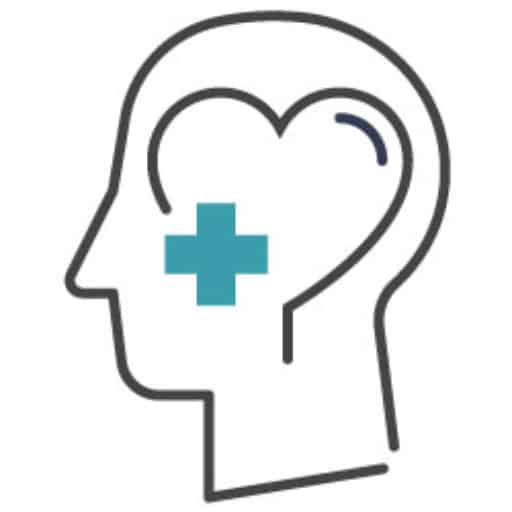If you’ve ever known someone who always seemed like they needed to be the center of attention, had disproportionately dramatic reactions to events or seemed to use a lot of flowery words that didn’t convey much substance, you may already be familiar with some of the presentations of histrionic personality disorder (HPD). However, just like with any mental health issue, it’s important to draw a line between what is someone just being dramatic and what actually constitutes a mental health diagnosis. If you or someone you love has been diagnosed with histrionic personality disorder or you’re concerned you may have some of the symptoms, keep reading to find out more about what this disorder is, how it presents and how it’s treated.
What Is Histrionic Personality Disorder?
Histrionic personality disorder is one of the personality disorders that fall into the Cluster B category, along with narcissistic personality disorder and borderline personality disorder. To be diagnosed with histrionic personality disorder, according to the DSM-5, someone must show a “persistent pattern of excessive emotionality and attention seeking,” with symptoms presenting by early adulthood.
This disorder affects how a person thinks, acts and behaves and can have a significant effect on their interpersonal relationships. Females are more likely to be diagnosed with histrionic personality disorder than males, and it’s estimated that only about 1% of the population has histrionic personality disorder, making it fairly rare.
It’s not yet known what exactly causes histrionic personality disorder, but the current school of thought in psychology is that the disorder is caused by a combination of genetic and environmental factors. There’s some evidence that seems to show histrionic personality disorder may be more likely if a person experiences childhood trauma or grew up with inconsistent or extreme parenting styles.
What Are the Symptoms of Histrionic Personality Disorder?
Exactly how a mental health disorder manifests can vary between people, but there are main symptoms that are used to clinically diagnose someone. The DSM-5 breaks down histrionic personality disorder into eight key symptoms. To qualify for diagnosis, the person must have at least 5 of the following:
- Feeling as if relationships are closer than they truly are
- Feeling uncomfortable when they’re not the center of attention
- Being easily influenced by outside forces, such as other people or environments
- Acting inappropriately seductive or behaving in an excessively sexual manner
- Having dramatic and theatrical expressions of emotions, including tone of voice and facial expressions
- Experiencing rapidly shifting emotions or only feeling emotions on a shallow basis
- Using vague, flowery language
- Using their physical appearance to get and maintain attention
Some of these symptoms can overlap with other personality disorders, making it important to ensure that any diagnosis is made by a qualified mental health professional who can do a thorough and accurate assessment of symptoms to screen for other disorders, such as borderline personality disorder, bipolar disorder, anxiety disorders and narcissistic personality disorder. These other disorders may also be co-occurring with histrionic personality disorder.
How Is Histrionic Personality Disorder Diagnosed?
Histrionic personality disorder, along with most mental health disorders, is diagnosed through a series of interviews and assessments that are administered by a mental health professional, such as a psychologist or psychiatrist. The clinician usually starts by taking a general health history, including mental and physical, and talking with the client about their symptoms and how they might be affecting their lives.
If the clinician determines it’s possible the person might have a personality disorder, they’ll administer further and more formal assessments. These could include structured clinical interviews and self-report assessments. Clinicians usually ask questions to determine if the person has experienced any kind of trauma, especially in childhood, and how they were parented. Self-report assessments might include personality inventories or screeners that look for issues in maintaining healthy interpersonal relationships.
The clinician may also choose to administer assessments specifically designed to rule out other possible personality disorders or determine if they’re co-occurring.
What Are the Treatment Options for Histrionic Personality Disorder?
Once a diagnosis of histrionic personality disorder has been given, the next step is to decide on a treatment plan. However, one of the most difficult parts of treating personality disorders like HPD is that the person often doesn’t actually view their actions or thought patterns as a problem. Those with histrionic personality disorder also tend to look for new and exciting things all the time, which means it can be difficult to get them to follow long-term treatment protocols.
Personality disorders are also not something that can be cured by any kind of medication or therapeutic treatment. Instead, clinicians work to help the person become more aware of these thought and behavior patterns and give them the tools to be able to deal with real-life situations and relationships in a healthier and less destructive way.
The two main treatment protocols for histrionic personality disorder are psychotherapy — either in a group or an individual setting — and cognitive behavioral therapy. Psychotherapy focuses on having the person talk about their issues and get outside perspectives, either from the rest of the group or the clinician. Cognitive behavioral therapy is more focused on achieving specific goals, which are usually set by both the client and the clinician as a team, by changing behavior and thought patterns.
Treatment for histrionic personality disorder may also include treatment for any comorbidities, such as anxiety or depression and is focused more on helping the person achieve a higher quality of life and more successful interpersonal relationships than necessarily “fixing” the personality disorder itself.
When the possibility of a personality disorder is first presented, whether it’s for yourself or for someone you love, it can feel like a difficult obstacle to overcome. But it’s important to remember that help and support are out there. Talking with our team at Restore can give you a better idea of what our process looks like and how we can help you achieve a better quality of life if you have histrionic personality disorder. Call (877) 594-3566 today to find out more about our options.



